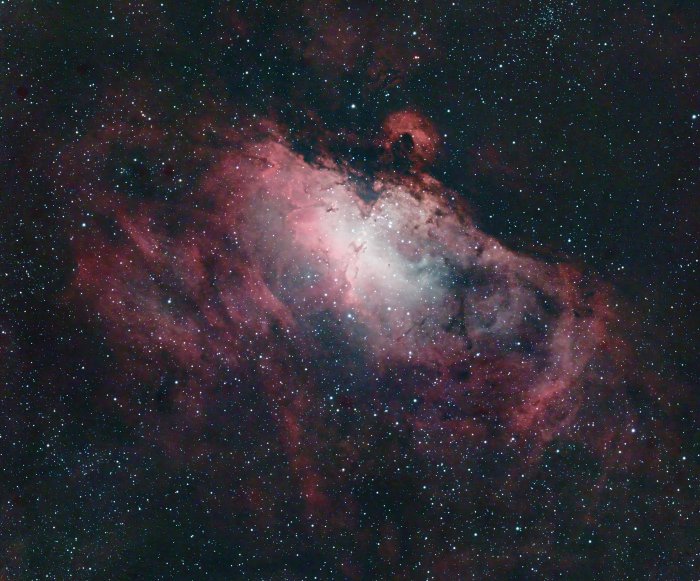ScienceDownEast | ScienceDownEast Astrophotography | Nebulae | M16 Eagle Nebula | M016 Eagle Nebula
Click on the image to enlarge.
The Eagle Nebulae (M16) is a young open cluster of stars, gas and dust in the constellation Serpens, discovered by Jean-Philippe de Chéseaux in 1745–46. Note the dark silhouette near the center of the nebula, an area made famous as the "Pillars of Creation" imaged by the Hubble Space Telescope. The nebula contains several active star-forming gas and dust regions. This image taken with the Triad Ultra Quad Narrow-Band filter, which permitted shooting from with light-polluted suburbia.Processed in PixInsight and Topaz Denoise.
| Exposure | 6@300 sec + 1@600 sec + 12@900 sec (8.25 hours) | |||||||
| ISO | 800 | |||||||
| Camera | Nikon Z7 [8856 x 5504] | |||||||
| Optics | Skywatcher Esprit 120mm Refractor, 840 mm focal length | |||||||
| Filter | Radian Triad Ultra Quad-Band Narrowband Filter | |||||||
| Guiding | Phd2 using a ZWO 224MC on an Orion 60x240mm Guide scope | |||||||
| Controller | Images taken using Kstars on an Odroid-N2 (Raspberry Pi clone) | |||||||
| Location | Lower Sackville, Nova Scotia. | |||||||
| Date | 2020-06-16 - 2020-09-05 | |||||||
| PixInsight Processing |
|
|||||||
| Further tweaking for noise reduction in Topaz DeNoise AI |

